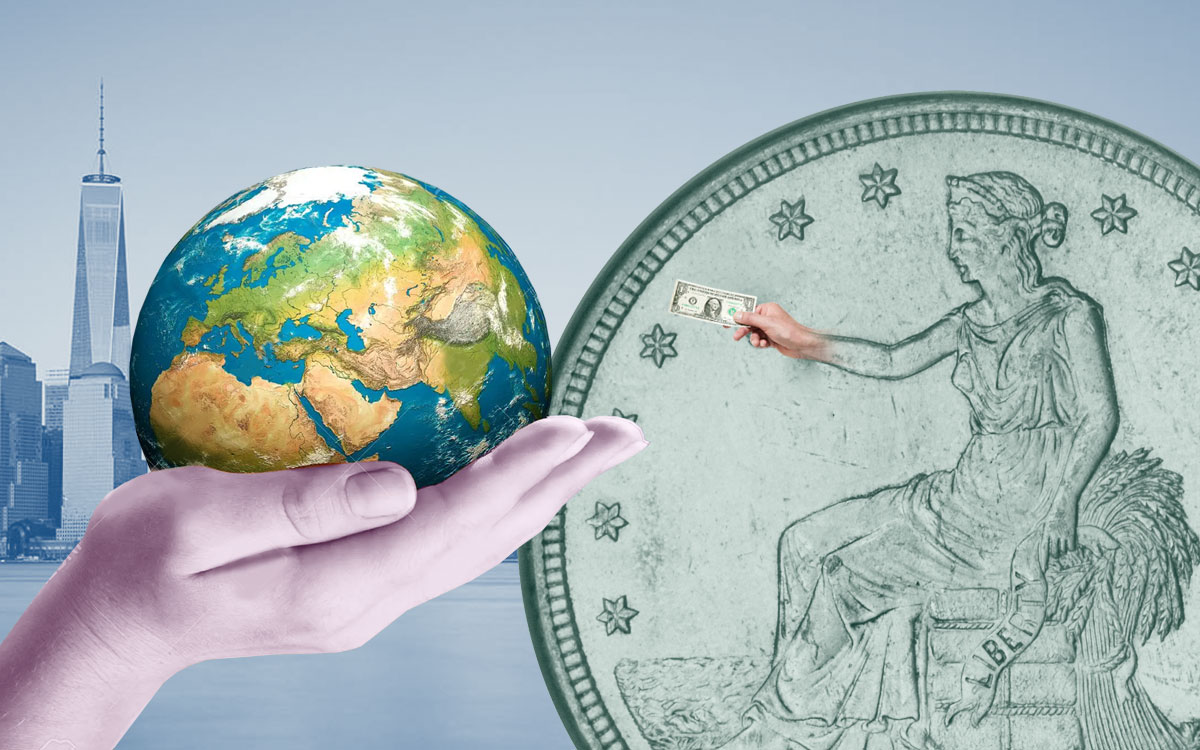Investing in 2024: How the US Dollar Influences International Markets-As we enter 2024, one of the most significant factors impacting global investment strategies is the strength and fluctuations of the US dollar. As the world’s dominant reserve currency, the US dollar plays a crucial role in shaping economic trends, international trade, and investment flows. For investors, understanding how the US dollar influences global markets is essential to making informed decisions. In this article, we’ll explore the key ways the US dollar affects international markets in 2024 and what it means for both individual and institutional investors.
The Power of the US Dollar in 2024
The US dollar remains the cornerstone of global finance, with its strength often driving international investment decisions. In 2024, several factors are contributing to the dollar’s ongoing strength, including higher interest rates set by the Federal Reserve, a robust US economy, and geopolitical uncertainties that push investors towards safe-haven assets.
When the US dollar strengthens, it tends to attract more foreign investment into the US, creating ripple effects across various global markets. For international investors, the value of the US dollar is an important consideration when determining where to allocate capital and how to manage risk.
How the US Dollar Impacts Global Trade

One of the most immediate and visible effects of a strong US dollar is its impact on global trade. Since the US dollar is the primary currency used in international trade—especially for commodities like oil, gold, and agricultural products—a stronger dollar can have significant consequences for exporters and importers around the world.
- Impact on Exports: When the US dollar rises, it makes US-made goods and services more expensive for foreign buyers. This can hurt US exporters, as their products become less competitive in the global market. For example, a US-based technology company might see its sales in Europe decline if the dollar is strong against the euro.
- Impact on Imports: On the flip side, a stronger US dollar makes imports cheaper for US consumers and businesses. For companies that rely on raw materials or finished goods from overseas, a strong dollar can reduce costs. However, the flip side for foreign producers is that their goods may become more expensive for US buyers, reducing demand in the US market.
- Commodity Prices: The US dollar also affects the pricing of commodities like oil, metals, and agricultural products. Since these commodities are typically priced in US dollars, a stronger dollar can make them more expensive for countries whose currencies are weaker. This can contribute to inflationary pressures in emerging markets and other parts of the world.
Currency Exchange Rates and Global Investments
Currency exchange rates are directly influenced by the strength of the US dollar. For investors involved in foreign exchange (forex) or international stocks and bonds, fluctuations in the value of the dollar can significantly impact returns. In 2024, with the US dollar trending stronger, investors are increasingly paying attention to currency risk when making decisions about global investment portfolios.
- Emerging Markets: A strong US dollar can create challenges for emerging markets, particularly those with significant debt denominated in dollars. As the dollar appreciates, these countries may face higher debt servicing costs, leading to economic instability. This can create opportunities for investors who are positioned to profit from currency fluctuations or emerging market bonds, but it also increases risk.
- Foreign Investment: For investors from outside the US, a stronger dollar means that US assets—such as stocks, real estate, and government bonds—become more attractive due to the higher value of their home currency. This often results in increased foreign direct investment (FDI) into US markets. On the other hand, for US-based investors, a strong dollar can make foreign assets relatively less appealing, as returns from foreign investments may be diminished when converted back into dollars.
- Hedging Strategies: Investors with exposure to international markets often use hedging strategies to manage currency risk. As the US dollar strengthens, hedging against potential losses in foreign currencies becomes increasingly important. For example, a US investor with assets in the eurozone might use currency futures or options to protect their investment against a potential decline in the value of the euro relative to the dollar. (Read More: Dal startup space partners with province to boost biomedical innovation – $650,000 to support Faculty of Engineering)
The US Dollar’s Role in Global Inflation

The value of the US dollar also plays a significant role in shaping global inflation trends. A stronger dollar can help moderate inflation in the US, as imports become cheaper. However, the impact of a strong dollar on inflation is more pronounced in other parts of the world, particularly in countries that rely heavily on imports.
For example, in countries with weaker currencies, a stronger US dollar can drive up the cost of imported goods, including oil and food. This can lead to inflationary pressures, as higher import costs are passed on to consumers. In developing economies, where a significant portion of goods are imported, the rising cost of living can create social and political instability, which, in turn, may affect global markets. (Read More: Entrepreneurship as the Engine of Economic Pulse on 2024: Driving Innovation and Growth)
Geopolitical Uncertainty and Safe-Haven Demand for the US Dollar
Geopolitical tensions and global instability often drive investors toward the US dollar as a safe-haven asset. When uncertainty strikes—whether due to conflicts, natural disasters, or financial crises—the dollar tends to appreciate as investors seek stability.
For example, in times of international conflict or economic volatility, the demand for US government bonds (which are considered low-risk investments) increases. This drives up the value of the US dollar, as investors exchange their local currencies for dollars to purchase US assets. While this can benefit investors in US dollar-denominated assets, it also means that other global markets may suffer from reduced investor confidence and capital outflows. (Read More: The Role of Technology in Business Transformation on 2024: A Catalyst for Evolution)
The Long-Term Outlook for the US Dollar

Looking ahead to the remainder of 2024 and beyond, the US dollar is expected to continue playing a central role in global investment decisions. Factors such as US interest rates, inflation, trade policies, and geopolitical risks will all shape the future value of the dollar and its influence on international markets.
For investors, staying informed about the dollar’s performance and understanding its broader implications is crucial to managing risk and optimizing returns. While a strong dollar presents opportunities in certain sectors, such as US equities and bonds, it also poses risks for global investments, especially in emerging markets and foreign currencies.
Conclusion article Investing in 2024: How the US Dollar Influences International Markets
In 2024, the US dollar continues to be a key factor influencing international markets. From global trade and currency fluctuations to inflationary pressures and investment flows, the strength of the dollar has far-reaching consequences for both domestic and international investors. As markets continue to react to shifts in the value of the dollar, it is essential for investors to stay informed, adjust their strategies, and be prepared for the opportunities and risks that come with a strong US dollar.




[…] value of the US dollar is influenced by a variety of factors, including interest rates, inflation, and investor sentiment. […]